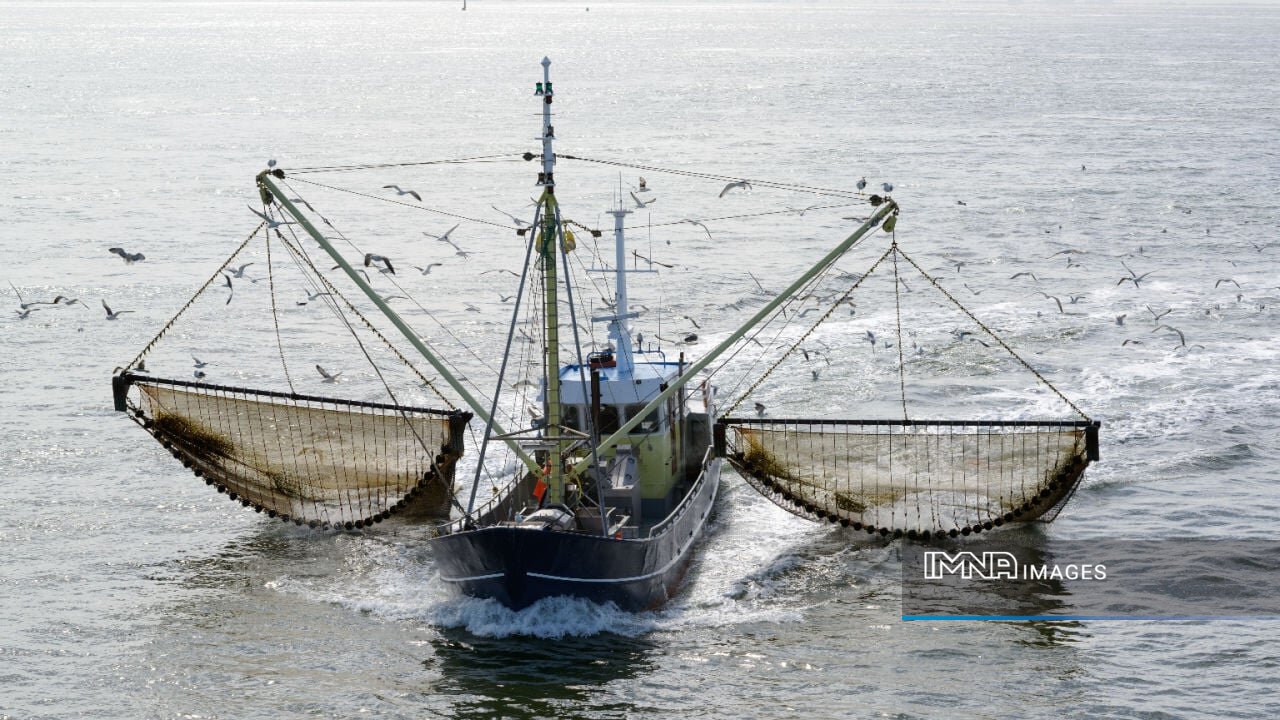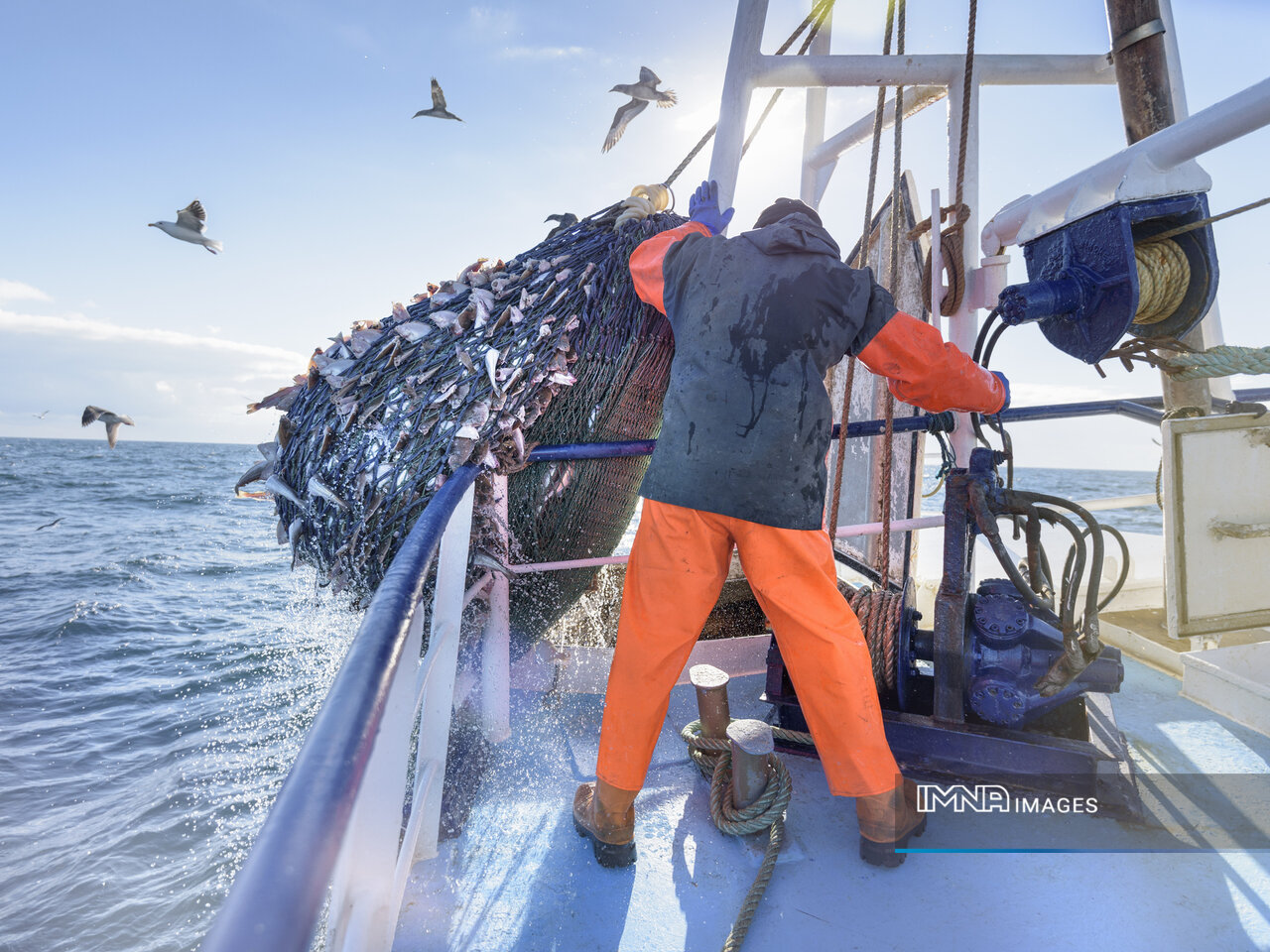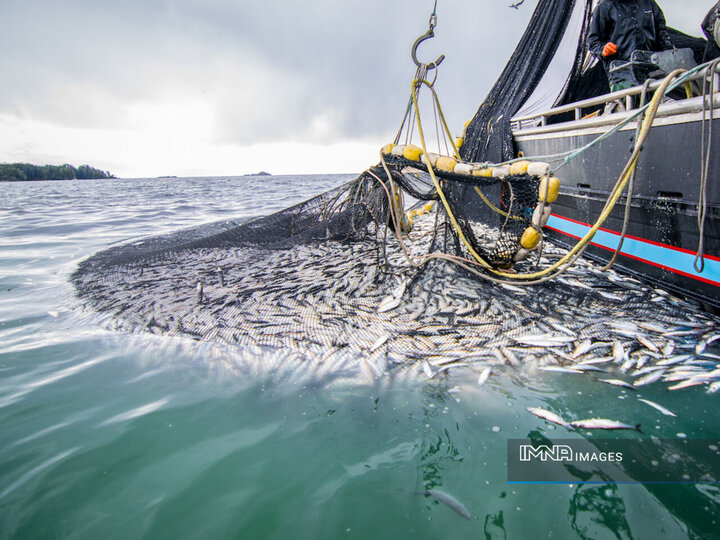Iran (IMNA) - One of the most prominent concerns associated with trawling is habitat destruction. As the heavy nets are dragged across the seabed, they indiscriminately scoop up not only the targeted fish species but also everything else in their path. This leads to the destruction of coral reefs, seafloor habitats, and other essential ecosystems that provide nursery grounds and shelter for countless marine organisms. The loss of these habitats can have far-reaching consequences, disrupting the intricate web of life in the ocean.
Furthermore, trawling has a severe impact on non-target species, commonly referred to as bycatch. The wide-mouthed nets are notorious for ensnaring not only the desired fish but also a vast array of unintended marine creatures, including dolphins, turtles, seabirds, and even vulnerable species on the brink of extinction. This unintentional catch often results in injury or death, adding to the already alarming rates of biodiversity loss.
Another detrimental effect of trawling is the alteration of the seafloor's physical structure. The repeated scraping of the seabed by trawl gear disrupts sediment layers, stirring up plumes of sediment that can smother marine life and reduce water quality. This disturbance can have long-lasting consequences, affecting the health and productivity of the affected areas.
In addition to the ecological ramifications, trawling also has significant socio-economic implications. It can lead to the depletion of commercially valuable fish stocks, threatening the livelihoods of fishing communities around the world. Moreover, the damage caused to marine ecosystems can have cascading effects on the tourism industry, which relies heavily on healthy and vibrant marine environments.

The Devastating Impact of Trawling in the Persian Gulf
According to Davood Mirshekar, the head of the marine ecosystem protection office at Iran’s Department of Environment (DOE), there is strong opposition to any form of trawling in the Persian Gulf due to its unique ecosystem sensitivities and the negative impact of climate change on biodiversity. However, to address the social consequences of unemployment in local communities, the DOE has permitted traditional shrimp fishing in three coastal provinces of the Persian Gulf (Khuzestan, Bushehr, and Hormozgan) during specific time periods (summer and autumn) and in the Oman Sea with restrictions on time and location outside coastal waters.
In collaboration with the Fisheries Organization, the DOE has developed guidelines for trawling in the Persian Gulf and the Sea of Oman. These guidelines outline which vessels are allowed to engage in trawling, where and when they can do so, and which species can be harvested.
Mirshekar also mentioned the adverse effects of bottom trawling, which involves dragging a net along the ocean floor to capture target species like groundfish or crabs. This practice causes significant damage to the seabed, including the destruction of coral reefs, grasslands, and important habitats. It also contributes to the death and potential extinction of endangered species, disrupts the marine ecosystem by reducing the biomass of seabed species and altering its composition, and affects the biogeochemical cycle that supports ecosystem function.
Midwater trawling can unintentionally result in the capture of marine mammals such as dolphins, porpoises, and whales, as well as other endangered species. The speaker expressed their concern about this issue.
Since 2001, the Department of Environment (DOE) has implemented various measures to mitigate the impact of trawling, aiming to carry out environmental monitoring and prohibit trawling in the southern waters of Iran. However, there are still more than 10 trawling vessels operating. In Hormozgan province alone, at least 10 trawlers have been confiscated due to violations of environmental regulations.

There are several challenges that hinder efforts to halt trawling. The primary legal obstacle is the absence of a comprehensive law focused on environmental protection that can effectively prevent illegal and irresponsible fishing practices.
It should be noted that, according to hunting and fishing regulations, the responsibility for matters related to fishing and its monitoring lies solely with the DOE in wetlands, rivers, and areas under their management. However, in sea and water regions, the Fisheries Organization assumes this responsibility. This lack of a designated governing body can impede efforts to stop trawling.
Furthermore, inadequate funding for marine environmental protection, a shortage of specialized and trained personnel, the absence of well-equipped vessels for coastal patrols and activities, a lack of advanced technologies for monitoring the marine environment, limited access to track fishing vessels, and insufficient public education through media channels are additional obstacles to effectively monitor and address violations, according to Mirshekar.


Your Comment